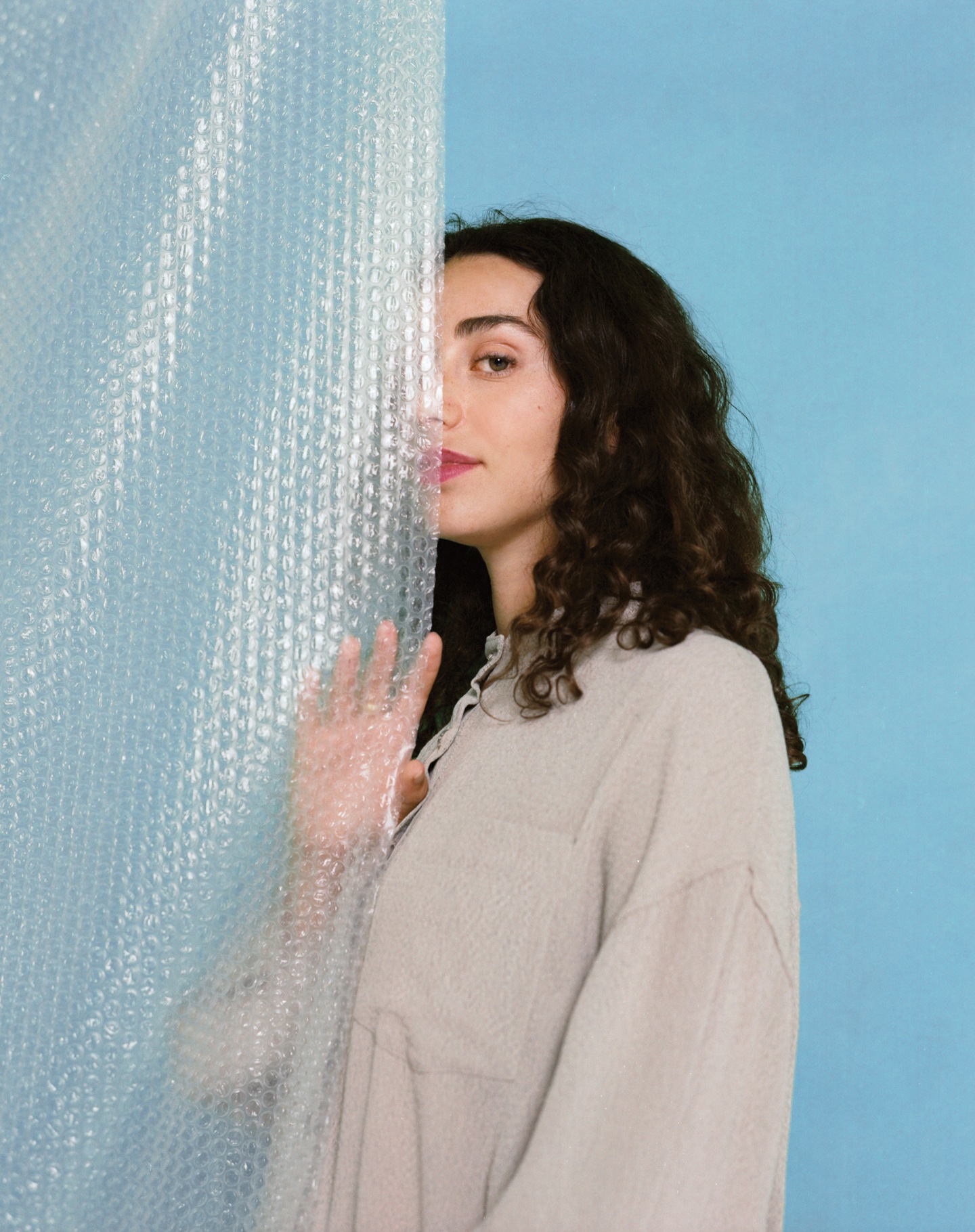This Director Translates Brands For Video, And Humans
Are next-level fashion films like Alexa Karolinski’s the new music video?

A woman in her mid-60s lies on concrete, singing Bon Iver softly, wearing a loose shirt made of pasta and a perfectly cut pair of jeans. Her hand movements are delicate, her face carries the pain of an old memory. A moment later, she’s vanished; pigeons are pecking at dried pasta on the ground where she just was, and you really want that pair of jeans.
The scene could only happen in the world of fashion films, artful videos made to introduce collections to online audiences, where directors like Alexa Karolinski are moving beyond conventions of advertising and pushing new boundaries for representing brands on film. Karolinski studied social documentary at New York’s School of Visual Arts and released a documentary film about traditional Jewish cooking, Oma & Bella, in 2012. Now 31 and based between Berlin and L.A., she’s spent the last couple of years making intimate fashion films, like Pigeon, for the avant-garde designers Eckhaus Latta, as well as spots for the denim brand 69 and a short about the cosmetics designer Maryam Nassir Zadeh. Most recent Eckhaus Latta film Roach “was probably the most experimental thing we’ve ever done,” Karolinski says, laughing. “It’s something my parents will not understand at all.”
Some fashion films skew closer to music videos, others to documentaries; the general theme is that there is none. “The fashion clients I’ve worked with never started with, ‘This is what I want,’” Karolinski says. “It’s more like figuring out how to translate how they see the world into the language of video.” Karolinski relishes the form’s openness and dislikes the traditional method of getting inspiration from moodboards made up of images from other films and fashion editorials—she’d rather start from a blank slate. “I love being put in a situation and seeing what I can make way more than recreating a photo that someone did in the ’80s.”
Today, every brand needs to know how to speak in the language of moving visuals. Even though Karolinski regularly warns clients that “you don’t plan viral videos, ever,” she finds herself watching YouTube videos with billions of hits—“puppies kissing babies and stuff”—looking for that textural or emotional quality that makes online films click. There’s potential in online fashion films to use that magical something to reach people way beyond a fashion house’s usual audience. “Video in itself is a medium that is largely accessible,” says Karolinski. “Much more than Fashion Week, you can access a whole different crowd that isn’t necessarily the fashion-interested people.”
Take First Kiss, the 2014 short film by the women’s clothing brand WREN, in which pairs of strangers are asked to kiss for the first time on camera. Right now, it’s edging close to 106 million views. With a viewing audience of that size and growing, the prospect of fashion heading in a more inclusive, open direction is very real. “You can really play with reality and make new realities,” Karolinski explains. “It doesn’t have to have anything to do with the real world.” Her most effective videos come from romantic variations on the world as we’re stereotypically shown it: take FRIEND, a re-imagining of the sitcom Friends that’s centered on a more racially diverse, LGBT, pot-smoking group, or Uniform, where a group of elderly Chinese ladies discuss luk tung kuen, a 36-step Chinese exercise. This new breed of anything-goes film is giving fashion the scope to roam outside of its billboard- and runway-formed avenues, revitalizing its radical potential. As Karolinski puts it: “No idea has ever been too crazy.”